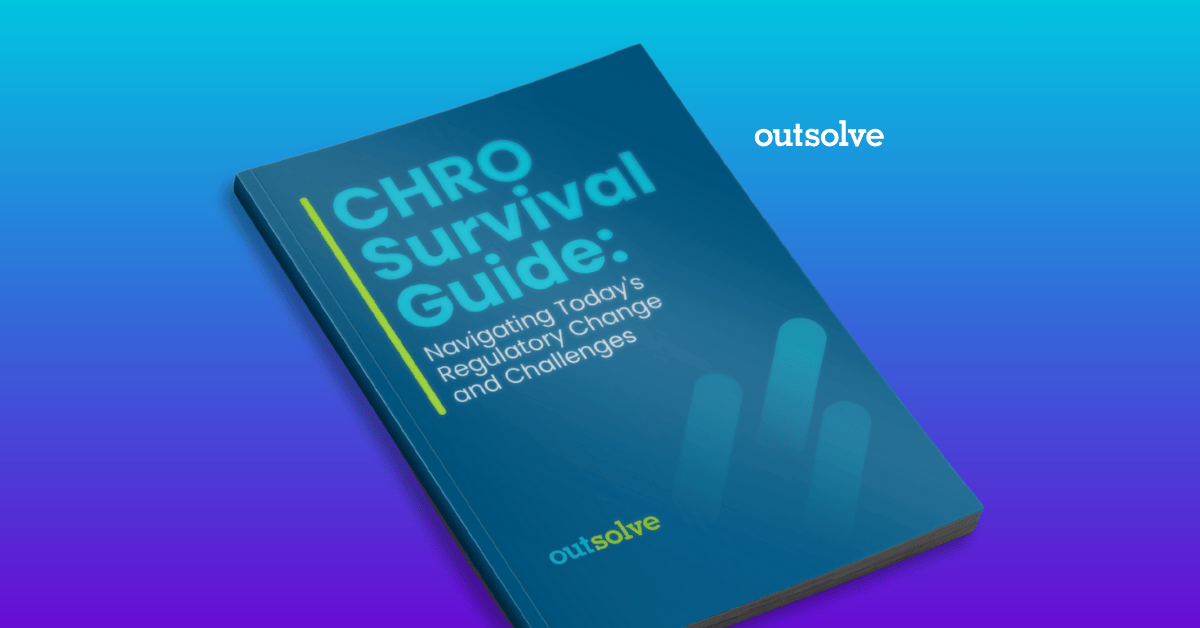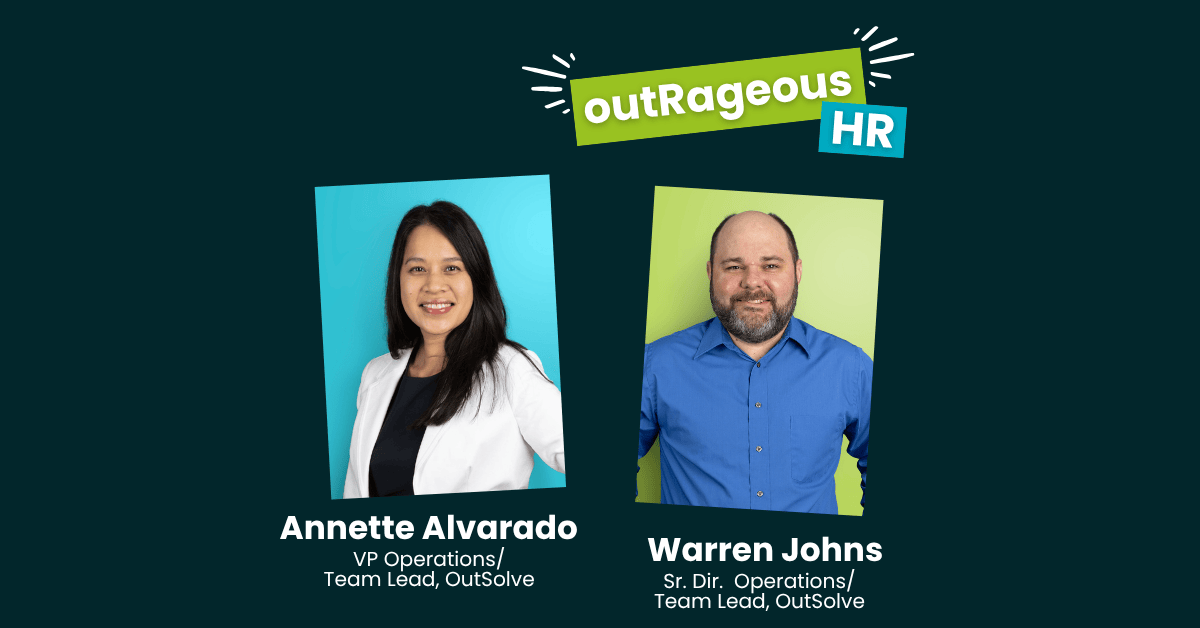7 min read
The New Reality of Immigrant Workforce Management and Compliance - Part 2
![]() OutSolve
:
May 21, 2025 11:49:13 AM
OutSolve
:
May 21, 2025 11:49:13 AM

OutSolve commissioned independent research on the state of immigration enforcement and the effect it may have on HR professionals. The information in these articles is provided for general education purposes.
This article is the second in an OutSolve series for HR professionals that provides an analysis of the Trump Administration’s proposed changes to I-9 employment eligibility verification and other issues related to having foreign nationals in your workforce. While recognizing that specific policy details are still emerging, this series draws on historical precedents, administration statements, and expert analysis to offer insights and provide practical guidance to HR leaders. Read I-9 Crackdown: What New Immigration Rules Mean for Your Workforce: Part 1 here.
Industries and States Most Vulnerable
The Trump administration's immigration policies, including stricter I-9 regulations, enhanced employment verification processes, and tighter H-1B visa requirements, are already having an impact on American businesses. These policies will disproportionately affect certain industries and states that rely heavily on immigrant labor, from seasonal agricultural workers to highly skilled tech professionals. This analysis examines which industries and regions should expect the most disruption from these changes and steps Human Resources professionals can take to mitigate the disruption.
Industries Under Pressure
The enforcement of stricter immigration policies affects industries differently, with some sectors facing particularly significant challenges due to their workforce composition and hiring practices.
Agriculture: The Front Line of Impact
Agriculture stands as perhaps the most vulnerable sector due to immigration policy changes. The industry has historically relied on seasonal and immigrant workers, many of whom come through temporary work programs and often lack proper documentation. Farms across America depend on this labor force for planting, maintaining, and harvesting crops. While reliable statistics on documented vs. undocumented workers specific to farm work are difficult to estimate accurately, the Bureau of Labor Statistics estimates there were 31.1 million foreign-born people in the workforce in 2024, or about 18% of the workforce. In January 2025, the Center for Immigration Studies estimated that 10.8 million illegal immigrants were working in the U.S., which represents about one-third of the total immigrant population.
Under tightened I-9 regulations, agricultural operations should expect increased scrutiny through more frequent audits and stricter documentation requirements. Many have been pressured to adopt E-Verify, a Federal online system that allows businesses to confirm the eligibility of employees to work in the United States. The combination of these factors has created a compliance burden that is particularly challenging for smaller farming operations with limited administrative resources.
Construction: Building Under Scrutiny
The construction industry represents another sector highly dependent on immigrant labor. Many construction companies utilize subcontractors and temporary workers, creating complex employment arrangements that increase the risk of documentation issues.
According to Employment Law Watch, increased I-9 enforcement by Immigration and Customs Enforcement (ICE) has led to more frequent job site inspections a strong case for ensuring those responsible for I-9 compliance remain knowledgeable about the law or working with an I-9 compliance provider to avoid errors and the resulting fines.
Hospitality: Service Under Stress
Hotels, restaurants, and tourism-related businesses employ significant numbers of entry-level, part-time, and immigrant workers. The hospitality sector's high turnover rates and variable staffing needs create particular challenges for maintaining perfect I-9 compliance. Under stricter enforcement, hospitality businesses face greater risks of audits and fines. Smaller operations, such as family-owned restaurants and boutique hotels, often lack formal HR systems to ensure consistent documentation practices. As mentioned above, this is another sector where an I-9 compliance partner could add significant value.
Manufacturing and Food Processing: Factory Floor Focus
Manufacturing facilities and food processing plants, particularly meat-packing operations, have historically been targets for immigration enforcement. These industries often employ immigrant labor for physically demanding roles that may be difficult to fill otherwise.
There is ample evidence that ICE intends to increase I-9 enforcement, some business sectors, including agriculture and manufacturing, have already seen an uptick in inspections, raids, and fines. Some operations have been forced by ICE or other agencies to rapidly replace large portions of their workforce following enforcement actions, leading to production disruptions and quality control issues.
Harvest Public Media reports that the meat processing industry has been designated for special attention by the current administration, creating operational challenges for companies already dealing with thin profit margins, labor shortages, and complex regulatory requirements.
Staffing Agencies: Middlemen in the Crosshairs
Employment agencies that provide temporary workers to multiple industries, such as agriculture, retail, and manufacturing, face unique challenges under strict immigration enforcement. These businesses manage complex documentation for diverse clients and workers, increasing the risk of errors or inconsistencies.
Staffing firms have had to invest heavily in training and compliance systems to protect themselves and their clients from penalties. Some have chosen to exit certain high-risk industries altogether, further constricting labor supply chains for businesses dependent on flexible staffing models.
Tech Industry: H-1B Restrictions Reshape Innovation
While different from industries facing I-9 enforcement challenges, the technology sector confronts significant disruption from the tightening of H-1B visa policies. Tech companies rely heavily on this program to recruit specialized talent, particularly in fields like artificial intelligence, software engineering, and data science.
Stricter H-1B requirements—including higher wage thresholds, narrower definitions of specialty occupations, and more extensive documentation demands—have made it more difficult for companies to bring in or retain foreign talent. This has created particular challenges for startups and mid-sized tech firms without the resources of industry giants to navigate an increasingly complex visa process.
The long-term implications include potential innovation slowdowns, project delays, and the possibility that some companies may relocate operations to countries with more accommodating skilled immigration policies.
States Bearing the Most Burden
The economic impact of these immigration policies is not distributed evenly across the United States. Some states with certain economic characteristics face disproportionate effects due to their primary industries.
California: A Perfect Storm
California represents ground zero for the impact of stricter immigration policies. The state's economy depends heavily on both H-1B tech workers in Silicon Valley and immigrant labor in its massive agricultural sector and service industries.
Enhanced I-9 verification in California's Central Valley agricultural operations threatens the stability of the state's $50+ billion farming industry. Simultaneously, H-1B restrictions create hiring challenges for the state's technology firms, particularly in competitive fields like artificial intelligence and software development.
The combined effect puts pressure on California's two most significant economic engines simultaneously, creating potential ripple effects throughout its diverse economy.
Texas: Dual Vulnerabilities
Texas faces challenges similar to California, with its economy balanced between a growing technology sector in cities like Austin and Dallas and industries like construction, agriculture, and oil field services that employ many immigrant workers.
The state's border location adds another dimension to its vulnerability, as shifting immigration policies have immediate effects on cross-border commerce and labor flow. Texas businesses report increasing difficulty filling positions across multiple sectors, from tech startups to construction firms building the state's rapidly expanding housing stock.
Washington: Tech Talent Concerns
Washington state's economy, anchored by tech giants like Microsoft and Amazon, depends heavily on the H-1B program to fill specialized roles. Stricter visa policies create particular challenges for the state's technology ecosystem, which has built its competitive advantage partly on the ability to recruit global talent.
Beyond the direct impact on tech firms, related industries like construction and real estate could see downstream effects if technology growth slows due to talent acquisition challenges.
New York (City): From Wall Street Banks to Park Ave. Restaurants
According to the ICE website, there is increased activity throughout the metropolitan area. New York's economy includes both highly skilled immigrant workers in finance and technology and essential immigrant labor in the food service sector, construction, and manufacturing. This creates a dual vulnerability similar to Texas.
The state's international business focus makes access to global talent particularly important for maintaining New York City's status as a financial and commercial center. Meanwhile, the hospitality industry that serves both tourists and locals face staffing challenges under enhanced documentation requirements.
Florida: Tourism and Agriculture Squeeze
Florida's economic pillars of tourism and agriculture both depend heavily on immigrant labor. The state's extensive agricultural operations, particularly in citrus and vegetables, face similar challenges to California farms under stricter I-9 enforcement. NPR has reported that businesses struggle under more stringent immigration law.
The tourism sector, including hotels, restaurants, and attractions, relies on immigrant workers for many entry-level and service positions. Labor shortages in either of these industries could have outsized effects on a state economy built largely around these sectors.
Compliance Ripple Effects
Beyond the direct impact on specific industries and states, these immigration policy changes create clear and immediate challenges for HR professionals, including:
- Documentation and compliance for both H-1B and I-9 processes
- Reclassification of H-1B "specialty occupations" by the U.S. Citizenship & Immigration Servies USCIS
- Document verification without sufficient training
- Potential employer liability for inaccurate documentation by hiring personnel (USCIS)
- Changing procedures for notice of inspection (raids) by ICE agents (USCIS and National Law Review)
Summary Considerations
The Trump administration's immigration policies represent a significant shift in how American businesses must approach their workforce planning and compliance practices. While some industries and states bear a disproportionate share of the immediate impact, the interconnected nature of the modern economy ensures that these effects will eventually be felt broadly.
Businesses are responding through a combination of enhanced compliance measures, increased wages to attract workers from a smaller labor pool, and investments in automation. States most heavily affected are developing programs to help businesses navigate the changing regulatory landscape while maintaining economic growth.
The total economic implications of these policies will likely take years to fully manifest, but the transformation of America's labor markets is already well underway. Companies, workers, and policymakers will all need to adapt to this new reality of stricter enforcement and tighter immigration controls.
Some Recommendations for Navigating the New Regulation Reality
Following are some practical recommendations for managing the challenges posed by the Trump administration's stricter immigration policies. Companies in agriculture, construction, hospitality, manufacturing, food processing, staffing agencies, and technology are particularly vulnerable to these changes. The following recommendations aim to help HR teams maintain compliance while minimizing disruption to business operations.
Immediate Action
- Audit Your I-9 Compliance Process
- Conduct a comprehensive audit of all I-9 forms for current employees and ensure you have retained the proper documentation on file for terminated employees
- Consider consulting a third-party I-9 audit expert to ensure objectivity
- Identify and correct any documentation deficiencies before an ICE audit
- Implement a remediation plan for any identified issues
- Implement or Upgrade Electronic I-9 Systems
- Consider adopting an electronic I-9 management system or engaging a third-party I-9 compliance service provider to:
- Flag incomplete or potentially problematic forms
- Automate reverification reminders
- Maintain secure digital storage of documentation
- Facilitate easy reporting and auditing
- Invest in Compliance Training
- Train select HR staff and hiring managers on proper I-9 completion procedures
- Develop clear workflows for document verification
- Create standardized operating procedures for handling complex cases
- Implement regular refresher training to keep staff updated on changing requirements
- Develop a Response Plan for ICE Audits
- Create a written protocol for responding to Notices of Inspection
- Designate specific team members responsible for different aspects of audit response
- Prepare employees for how to interact professionally with immigration officials
- Establish a relationship with legal counsel specialized in immigration compliance
- Implement Strict Documentation Practices
- Apply across all locations
- Create secure systems for storing sensitive verification information, whether it be electronically or on paper
- Develop protocols for document retention and destruction
- Establish regular internal auditing procedures
Conclusion
The changing immigration enforcement landscape requires HR professionals to adopt proactive, strategic approaches to compliance and workforce planning. By implementing robust verification systems, developing clear procedures, and creating contingency plans, companies in the most affected industries can navigate these challenges while maintaining operational continuity. Regular assessment and adaptation will be key as policies continue to evolve.
Related Articles
Founded in 1998, OutSolve has evolved into a premier compliance-driven HR advisory firm, leveraging deep expertise to simplify complex regulatory landscapes for businesses of all sizes. With a comprehensive suite of solutions encompassing HR compliance, workforce analytics, and risk mitigation consulting, OutSolve empowers organizations to navigate the intricate world of employment regulations with confidence.
Weekly OutLook
Featured Posts

The Federal Government Shutdown Lingers: HR Professionals Take Action

HR Planning: 5 Planning Steps for Q4
Related Posts

Breaking Down the Notice of Inspection for ICE Audits
Getting a Notice of Inspection (NOI) from U.S. Immigration and Customs Enforcement (ICE) can make any HR professional nervous. While it may seem...

CHRO Survival Guide: How CHROs Can Navigate the Regulatory Rollercoaster
Welcome to the first of our 3-part research series titled CHRO Survival Guide: Navigating Today's Regulatory Change and Challenges. This part dives...

HR Compliance Consulting: Maximize Efficiency in the New Year
It’s that time of year for new goals, new budgets, and new opportunities to strengthen your organization. The beginning of the year is an ideal time...
